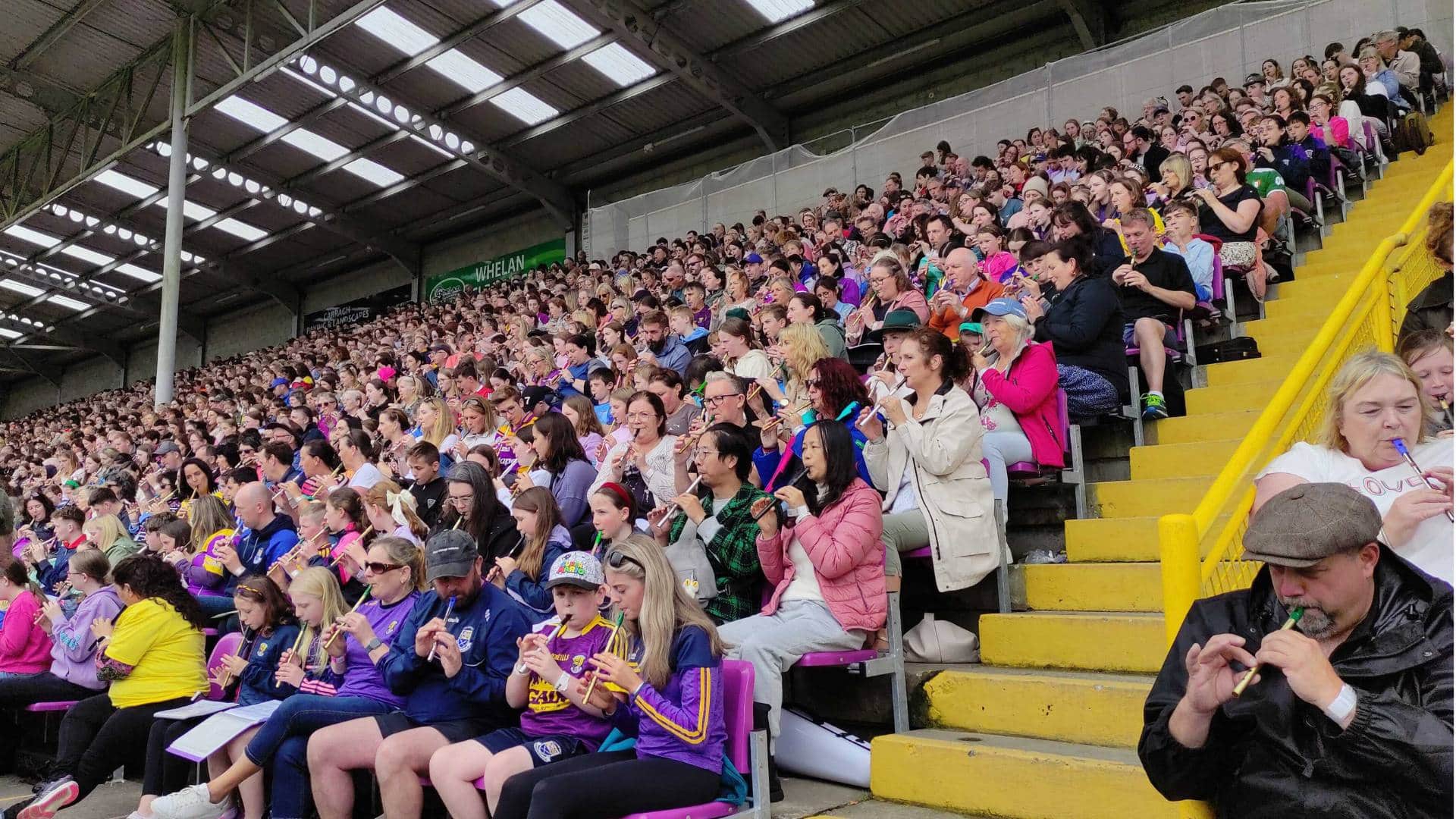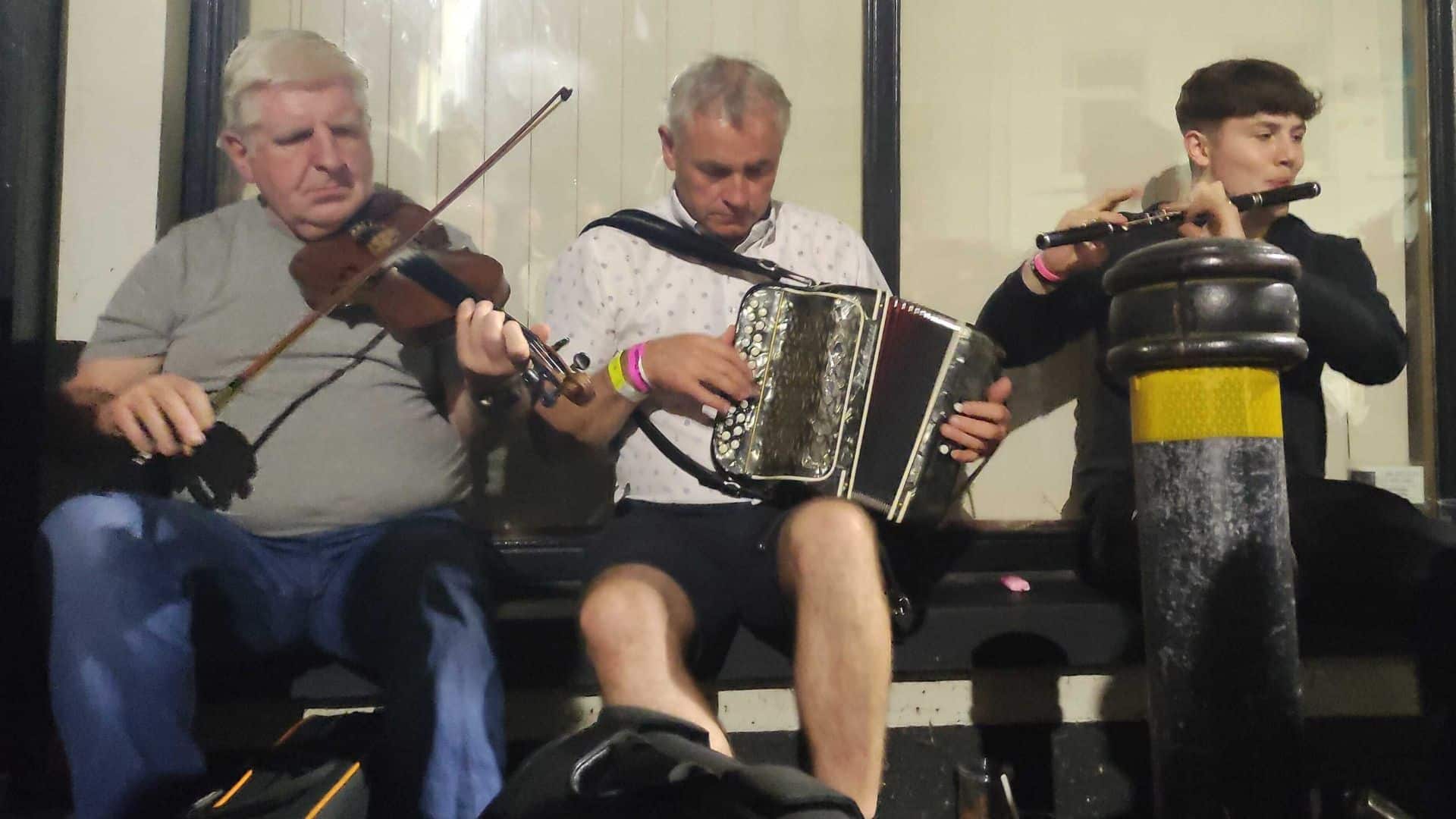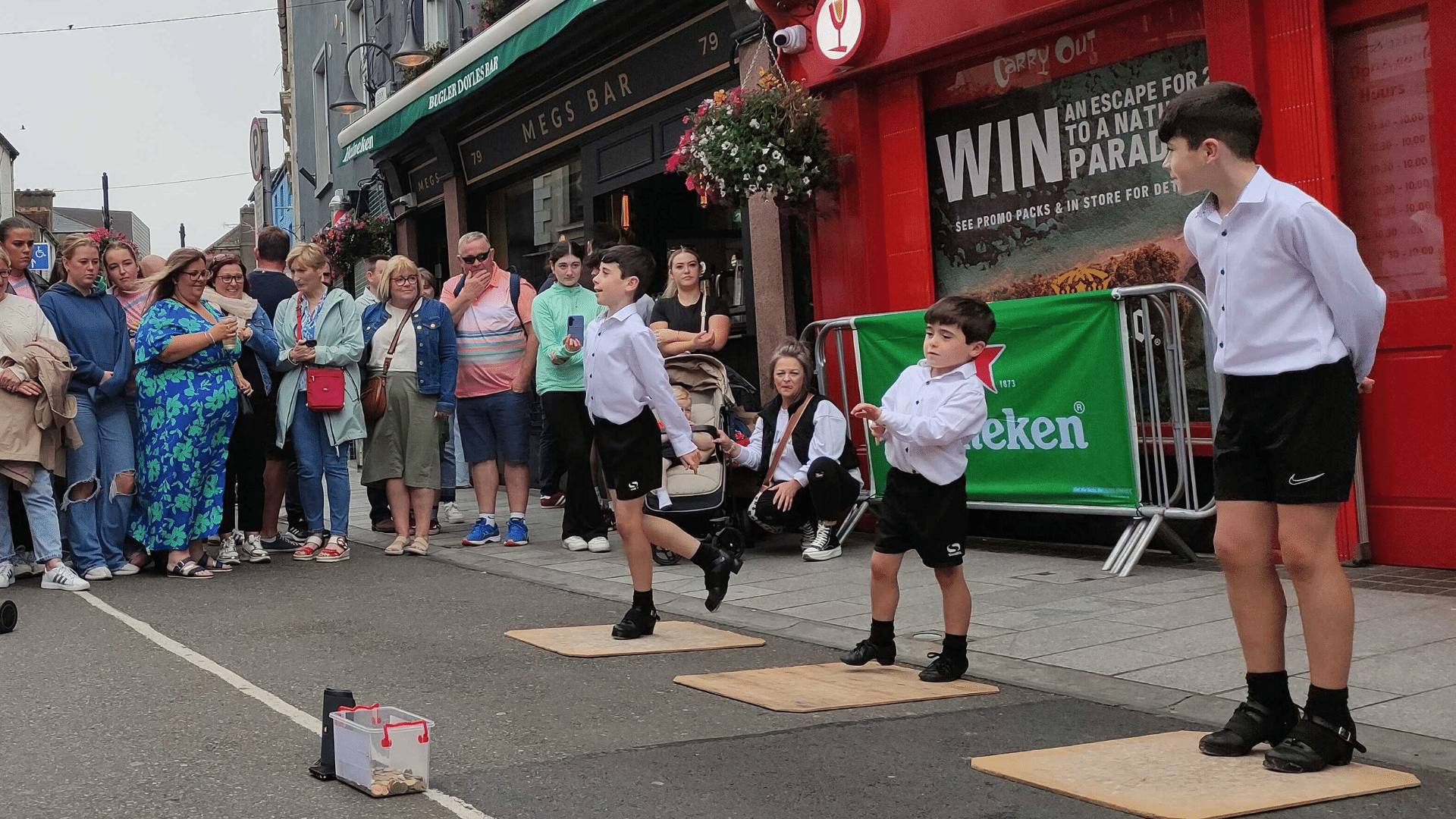A giant crowd of people playing tin whistles — small flutes — in the Irish town of Wexford showed the world how music can connect people and communities and be, well, good craic.

2,516 tin whistle players gather to set a Guinness World Record at Chadwicks Wexford Park GAA stadium on 8 August 2024. (Photo credit: Cathal O’Luanaigh)
This article was produced exclusively for News Decoder’s global news service. It is through articles like this that News Decoder strives to provide context to complex global events and issues and teach global awareness through the lens of journalism. Learn how you can incorporate our resources and services into your classroom or educational program.
Walk in to any Irish pub worldwide, sit down with an instrument and start playing Irish tunes. Chances are someone will soon pull out their own instrument and play along or start singing. Why is that?
Irish music has strong roots anchored in Irish identity that was forged out of anti-colonial resistance and a diaspora that resulted in Irish communities all over the world.
When Ireland was under British rule, the Irish language, education and expressions of Irish culture, such as its music, were banned under the Penal Laws of 1695. The Protestant ruling class brought in laws to stop Irish Catholics from owning or buying land. They were forbidden from entering professions, holding public office, receiving education, renting land of over a certain value, renting or inheriting from Protestants, owning horses of a value of more than five pounds or trading.
In short, they were stripped of all of their rights.
This left a native Irish speaking people with very little. Poor and unable to seek work, speak their language or express themselves, Irish music became an important part of preserving culture, celebrating heritage and resisting oppression. It became an integral part of being Irish.
But that’s just part of why Ireland’s music has travelled so well. It is also likely a result of the commercialisation of Irish culture following independence and a later commercialisation of the Irish pub. The international Irish pub phenomenon coupled with its association with drinking culture and the growing popularity of bands like The Dubliners, Planxty, The Chieftains and The Pogues also played their role in popularising the sound of Ireland.

Music that travels
Irish tunes are simple, memorable and repetitive. One reason for this is that people needed to be able to teach each other the songs without the need for instruments or any written notation. Stories were memorable and widely shared. To this day, the Irish still pride themselves in expressing and valuing Irish cultural heritage. That pride in celebrating heritage travels with Irish people.
Music travelled with the Irish as they were outlawed to Australia, fought wars in far off lands, were driven to the United States by famine and as they migrated to the United Kingdom and across the world for employment. Often illiterate, uneducated or undereducated, an oral culture developed in music and in storytelling.
The Irish are known for their music and their storytelling. This is perhaps partly because, left with little else, the Irish valued these vestiges of their culture as integral parts of their being. To this day, these two integral parts of Irish heritage are celebrated at a yearly event called the Fleadh Cheoil na hÉireann.
The Fleadh Cheoil na hÉireann — meaning Irish music festival or feast of music — is a tradition that takes place every year. Musicians from Ireland and from across the globe come together to celebrate Irish music.
The streets fill with revellers, songs and tunes. There are concerts across the host town and musicians compete in a number of individual and group events on their given instruments.

Ensuring the survival of traditional music
Much like the thousands of musicians who gather, the event itself travels, with different towns across Ireland playing host each year, offering them the opportunity to showcase local talent and culture and bring in an influx of tourists, and their euros, to the area.
This year, the Fleadh (pronounced flah) was held in Wexford where it will return again in 2025. Along with the prestige of holding the event, the 2024 festival attracted over 650,000 people to the town and is expected to contribute as much as €60 million to the local economy.
At the Fleadh, children as young as five or six busk in the streets — playing tunes with their friends and families. This is seen as an essential part of keeping the culture of music alive from generation to generation. In fact, even the police join buskers. While traditional songs are handed down through generations at home, in pubs and in concert halls across the country, the top traditional Irish musicians often come through the Fleadh.
The festival is the culmination of a year of competitions held by Comhaltas Ceoltóirí Éireann, (pronounced coal-tus kyol-tori air-un), a nonprofit cultural association dedicated to the preservation and promotion of Irish traditional music.
Musicians compete in local Comhaltas centres across different age categories. Comhaltas has a strong presence not just in Ireland but in 22 countries worldwide including the United States, Canada, Australia, Great Britain, Portugal, Spain, France, Finland, Malaysia, Japan and the United Arab Emirates. Local winners compete regionally and regional winners go to the finals which take place throughout the week of the Fleadh.
Setting a world record
Thousands of musicians take part in the Fleadh and compete across hundreds of competitions. There were an estimated 7,000 competitors in 250 events this year with an estimated 20,000+ people performing across the town.
In each age category there are individual events for competitors on traditional Irish instruments such as the fiddle, harp, Irish flute, tin whistle, accordion, concertina and the bodhrán — a traditional Irish drum. There are competitions in Irish singing — in Gaelic, Ireland’s national language.
People also compete in storytelling in English and Irish and even in mouth whistling and lilting, a form of melody singing using sounds rather than words. It is a common way of remembering tunes when you don’t have an instrument. It was used by poorer communities to share songs or for shepherds and farmers working the fields with no access to instruments.
On 8 August, thousands of people gathered to watch and to help set a new Guinness World Record for the largest group of tin whistlers playing for a continuous period of over five minutes.
People came from all over Ireland, and from as far away as Australia, the United States and China. Free tin whistles were handed out and more than 2,500 people of all ages and abilities joined together, playing ‘The Dawning of the Day’ and ‘The Boys of Wexford’ in unison.
The stadium which is just a stone’s throw from Castlebridge — home of the Guinness Book of World Records, which was founded in 1951 by Sir Hugh Beaver, then the managing director of Guinness Breweries. The story goes that after a dispute during a game-shooting outing over which bird was the fastest in Europe, Beaver decided to found an official book that might put an end to such disputes.
Ainéad Ní Dhomhnaill from Killarney, County Kerry, won the competition for set-dancing for over-35s and will be taking a trophy cup home. “Killarney: we’re very proud to have won it,” she said. “The cup is going back to County Kerry, to the Spa Killarney Comhaltas CCÉ Branch.”
What is best about the Fleadh, is that it is inclusive. “The Fleadh is ceol — which is music — ceol, craic agus caint [music, fun and conversation] and it’s a Fleadh for everyone,” Ní Dhomhnaill said. “You don’t have to play music, you don’t have to dance. You just have to be willing to put yourself out there, meet people, join in the conversation and have a ball. It’s come one, come all, come have a ball for Fleadh 2024!”
Three questions to consider:
- Why is Irish music played all over the world?
- What is one way Irish music festivals ensure that the tradition of Irish music isn’t lost?
- Can you think of a type of music that originated in one country that is popular in other countries?

Cathal O’Luanaigh is News Decoder’s program and communications manager. Cathal is an educator, linguist and creative with a particular interest in international development, global citizenship and the arts. He has a background in Geography (BA), Commercial Music Production (Diploma) and Development and Emergency Practice (MA). Irish, raised in Brussels and now based in Madrid, he has lived and worked in Belgium, the Netherlands, the UK, Spain, Uganda and Vietnam.

Why is Irish music played all over the world?
Because the Irish people take the music as a form of explaining themselves. Through their story, the music has been their harbor, because most of their rights were stripped off.
What is one way Irish music festivals ensure that the tradition of Irish music isn’t lost?
They share their tradition through their festivals.
Can you think of a type of music that originated in one country that is popular in other countries?
Rock, Rap, Jazz.